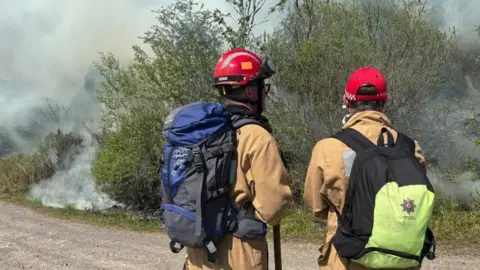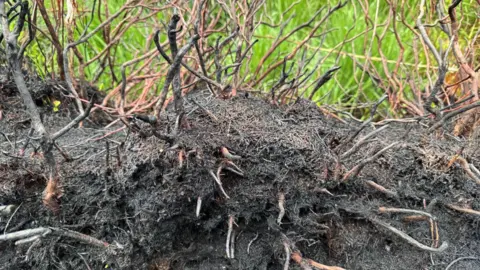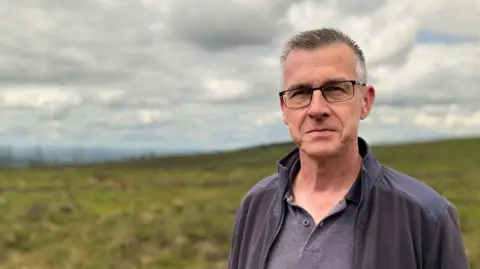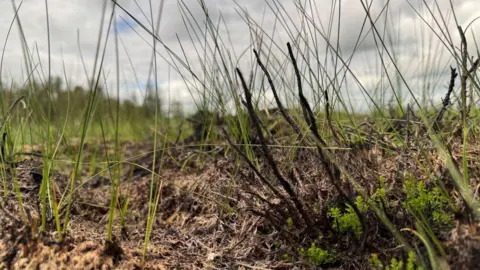Peatland 'could take thousands of years' to recover after wildfire
 BBC
BBCIt could take thousands of years for a cross-border peatland destroyed by fire to return to ecological health, a conservation group has warned.
The fire on Slieve Beagh raged for three days in May.
The bog is an important site for biodiversity and is home to the endangered hen harrier.
Roy Spence, from the River Blackwater Catchment Trust (RBCT), said it was "a battle" to get the ecosystem back to where it should be.
Slieve Beagh has a number of designations aimed at protecting it, including Special Area of Conservation, Special Protection Area, Ramsar status and Area of Special Scientific Interest.

While the scorched surface is now flushed green with new growth, Mr Spence said it was not a sign of recovery.
"Unfortunately the species that have come up first here is the Molinia grasses and next year they will be a high fire hazard.
"It takes so long for moor to recover, to get this back to how it should have been it would probably take thousands of years."
The group has secured EU funding to help restore the bog, removing alien species and blocking drains to rewet the ground.
The aim is to get it functioning again, keeping greenhouse gases and other pollutants trapped within it.

"The first thing you need in any ecosystem is the plants and the plants take a long time to recover," said Mr Spence.
"For bog species, we need the bilberry, we need the sphagnum mosses, also we need the bog myrtle - we need all these other plants to grow to feed all the insects, because that's the next step of our ecosystems."
But attracting the number of insects required to populate the third largest blanket bog in Northern Ireland could take as long as six years.
Then the birds follow.
"They have to have successful broods of chicks which are weather-dependent of course, and predator-dependent," added Roy.
"So it's a battle for everything to get back that ecosystem."

The RBCT is also creating a fire plan, working with other agencies.
"We're looking at simple things like people to be lookouts for fires, WhatsApp groups, this kind of thing," said Alan McCabe, the group's secretary.
"But we're also looking at technologies like drone technologies that could help us find fires - and then ultimately even fight fires for us as well."
The fire in May has been described as a "hot" burn. It moved slowly and burned deeply into the blanket bog.
That has caused concern about what remains beneath the surface to grow again and start the regeneration of the peatland.
'Everything's stacked up against us'
The RBCT has long-term plans to reintroduce grazing on the moor to help control the amount of vegetation that could burn.
But deterring people from deliberately starting wildfires is a priority.

"We have plans in place where we can actually make it difficult for people to get in and light fires and get away without being detected," said Mr Spence.
"When fires are lit, we're looking into using modern technology, using drone technology, CCTV, AI technology, so drones can chat to each other.
"And rather than have people up here because it's very hard to get to, we'll have drones over here, monitoring what's happening."
The effect of climate change is on Mr McCabe's mind as well.
"We're getting hotter springs, drier springs, and maybe for a longer period as well," he said.
"So everything's stacked up against us, but there are solutions here.
"There are actions we can take here on the ground.
"But we need to be working with the land owners, the Forest Service, the farmers."
